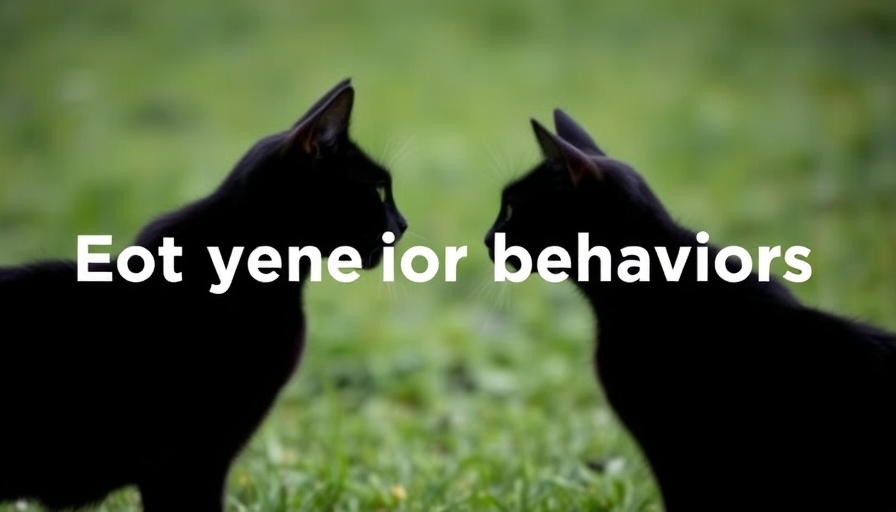
Understanding Feline Aggression: More Than Just Nature
Feline aggression is often perceived as a mere instinctual behavior, but a deeper dive reveals that the motivations behind a cat's bite can be multi-faceted. From stressful environments to fear-based reactions, understanding the underlying causes can significantly enhance the effectiveness of interventions in clinical practice. As professionals in the veterinary field, recognizing that each encounter with a cat is unique allows for tailored approaches that address specific behavioral concerns while also ensuring safety for both staff and pets.
The Importance of Environment in Cat Behavior
Environmental factors play a critical role in feline aggression. Studies suggest that altering a cat's surroundings can drastically reduce aggressive incidents. For example, providing vertical spaces, ensuring litter boxes are adequate in number and cleanliness, and minimizing overstimulating stimuli can create a calm atmosphere that fosters positive behavior. Implementing these adjustments is not only beneficial for the pets but also enhances the experience for both clients and practitioners.
Recognizing Signs of Distress Before a Bite
Proactive measures can prevent aggressive bouts in the veterinary clinic. Awareness of body language is key; behaviors such as raised fur, a twitching tail, dilated pupils, or hissing can all indicate a cat is becoming agitated. Training veterinary staff to recognize these warning signs can help de-escalate situations before they escalate into bites, thereby fostering a more harmonious environment for all involved.
Behavioral Insights and Handling Techniques
Differentiating between types of aggression—such as play aggression, fear aggression, and redirected aggression—can inform handling techniques. Understanding the context behind each bite encourages the development of specialized handling procedures. Utilizing gentle restraint techniques, such as the use of a towel or scruffing in a calming manner, can not only keep the vet staff safe but also mitigate a cat's stress during examinations.
Future Trends in Feline Behavior Management
Going forward, the veterinary industry can benefit from ongoing education about feline behavior. As new research comes to light focusing on behavioral medication and training techniques, such information will empower veterinary professionals to manage feline aggression more effectively. This proactive stance not only helps in reducing stress for the animals but also builds trust and fosters long-term client relationships.
Emotional Connection: Building Trust with Clients
Understanding aggression in cats doesn’t just help in clinical settings; it also fosters a deeper connection with pet owners. Clients who feel like their concerns are being addressed are more likely to return for regular checkups and follow-ups. Providing educational resources on feline behavior can also position veterinary clinics as trusted advisors, enhancing client loyalty and satisfaction.
Take Action in Your Practice Today
By implementing behavior-focused strategies in your practice, you create a safer and more welcoming environment for both clients and pets. Consider investing in staff training focused on feline behavioral understanding and handling techniques, which can reduce incidences of aggression and enhance the overall clinic experience.
 Add Row
Add Row  Add
Add 




Write A Comment